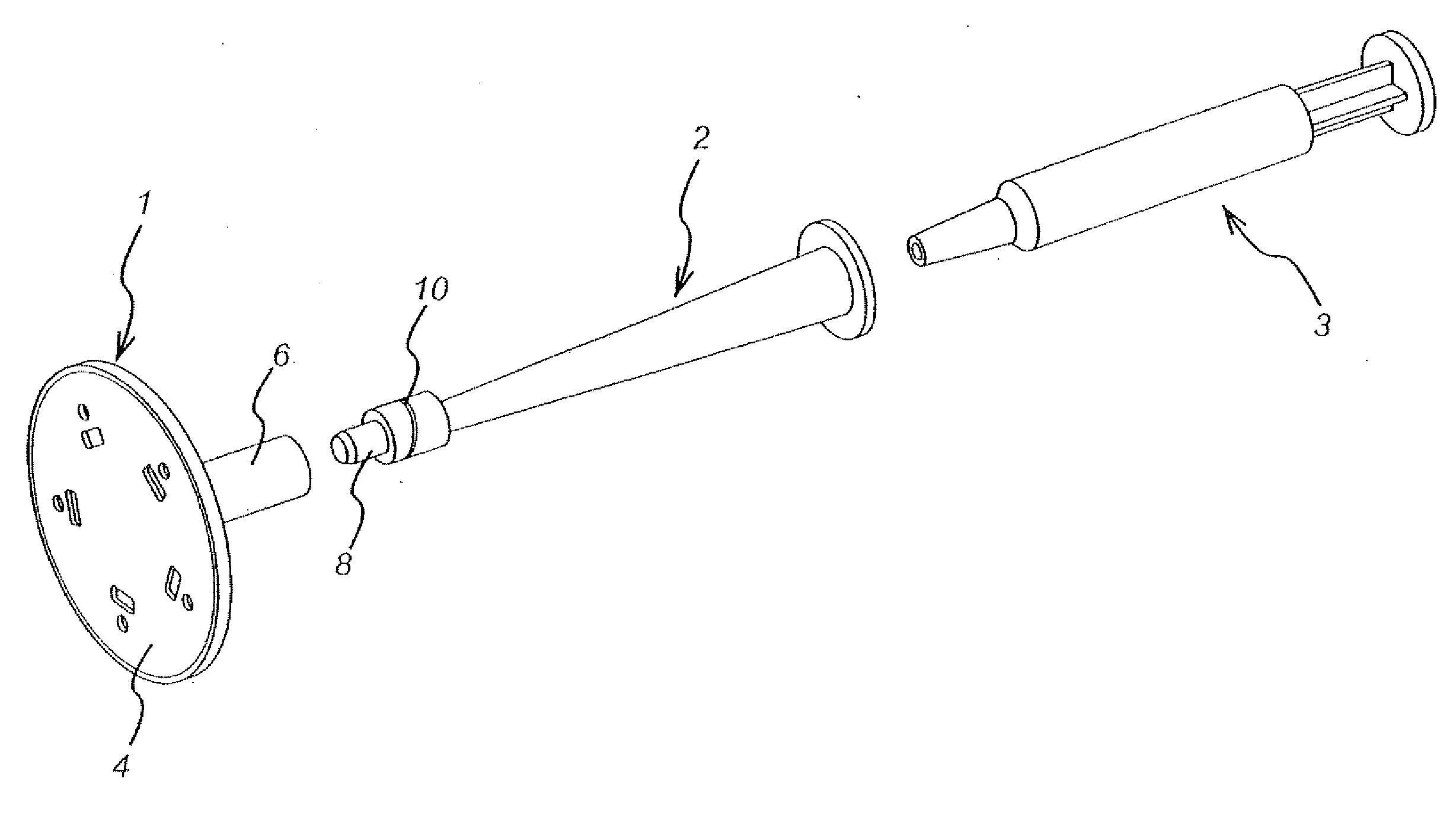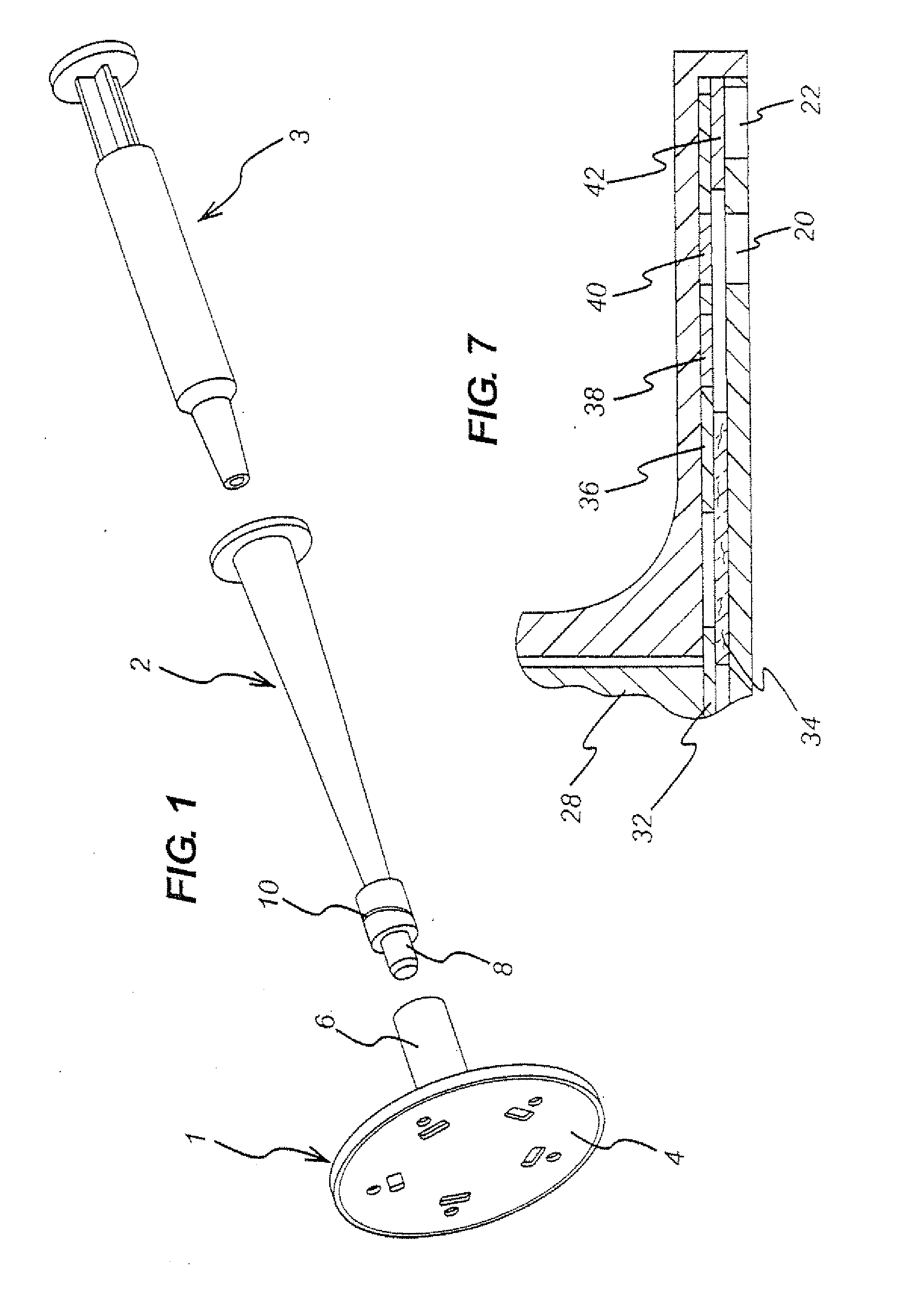Marker of wound infection
a technology of wound infection and marker, which is applied in the field of early detection and/or quantification of wound infection, can solve the problems of increased length of hospital admission, morbidity and mortality, and the development of wound infection of many patients, and achieve the effect of improving the stability of the material
- Summary
- Abstract
- Description
- Claims
- Application Information
AI Technical Summary
Benefits of technology
Problems solved by technology
Method used
Image
Examples
Embodiment Construction
Determination of Antioxidant Capacity by Cytochrome C Assay
[0067]Wound fluid samples from 10 infected and 10 non-infected Venous leg ulcer wound fluids were isolated. In a total volume of 1 ml of 100 mM potassium phosphate buffer, pH 7.8, a superoxide flux was generated by the oxidation of hypoxanthine (1 mM, Sigma) by xanthine oxidase (5 mU / ml; grade III Sigma). All reaction mixtures also contained cytochrome C (10 micro-M; horse heart type III Sigma). To determine the total antioxidant properties of the wound fluids, reaction mixtures were also established containing each of these samples (50 microlitres). Superoxide dismutase (40 U / mL, bovine erythrocytes, Sigma), an established scavenger of superoxide, was used as a positive control in this assay. Following initiation of the superoxide flux, the reduction of cytochrome C was monitored spectrophotometrically at room temperature and 550 nm, against a blank of all reagents minus the xanthine oxidase. Absorbance values were recorded...
PUM
 Login to View More
Login to View More Abstract
Description
Claims
Application Information
 Login to View More
Login to View More - R&D
- Intellectual Property
- Life Sciences
- Materials
- Tech Scout
- Unparalleled Data Quality
- Higher Quality Content
- 60% Fewer Hallucinations
Browse by: Latest US Patents, China's latest patents, Technical Efficacy Thesaurus, Application Domain, Technology Topic, Popular Technical Reports.
© 2025 PatSnap. All rights reserved.Legal|Privacy policy|Modern Slavery Act Transparency Statement|Sitemap|About US| Contact US: help@patsnap.com



